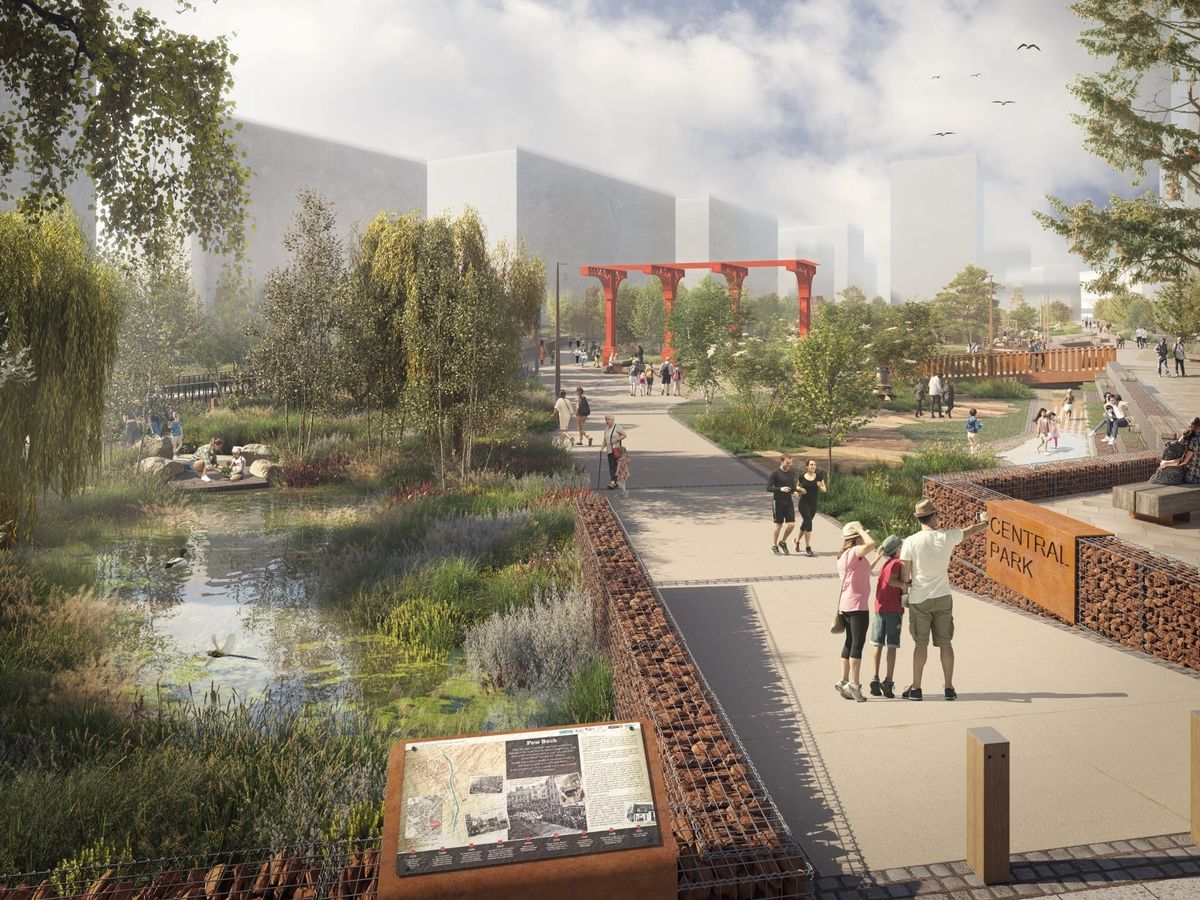Plans for the development of Liverpool Waters Central Park have been presented by Peel L&P to Liverpool City Council. Comprising a park and a network of green spaces the development will be surrounding the Central Docks neighborhood at Liverpool Waters.
This planning proposal will directly facilitate the delivery of thousands of additional residences in Central Docks. The region is the largest of the five planned neighborhoods at Liverpool Waters. Other developments included in the project include commercial, retail, leisure, and communal buildings. The planning application represents a significant advancement and shows Peel L&P’s dedication to the revitalization of the city’s northern ports.
The recommendations lay forth Peel L&P‘s goals for developing an environment of the highest caliber, with sustainability, biodiversity, and heritage at its core. The development of Central Park, new street infrastructure, green spaces, and public realm areas to the north of Jesse Hartley Way are a few examples. Additionally, they will greatly enhance pedestrian and cycling access. This is between the city center and Princes Dock to the new Everton stadium at Bramley Moore Dock and the northern ports of the city.
Read Also: Construction to start on next phase of development at Begbroke Science Park
Expectations for the Liverpool Waters Central Park
If authorized, Central Park would expand to 1.9 hectares (or 4.7 acres). Thus, it will make it one of the largest green spaces in the city center. More than 1,000 trees will also be planted there. The park’s architecture was created to offer a distinctive, top-notch setting that honors the area’s post-industrial history and coastal setting.
Coastal woodland planting, wetland planting, community gardens, and open parkland planting are also included in the proposals for Central Park. The designs include containing areas for sport, recreation, and fitness as well as habitats created to support local animals.
In the neighborhood surrounding Central Dock, the public realm and street infrastructure will feature a number of green streets and rain gardens, high-quality pathways, and a diversity of street types to support cars, pedestrians, and cyclists.
As a component of the Mersey Forest, the Central Dock neighborhood’s tree cover will rise by about 10%. Furthermore, along important rail and road corridors, it may rise by as much as 30%. This will help in connecting the city’s green spaces.

